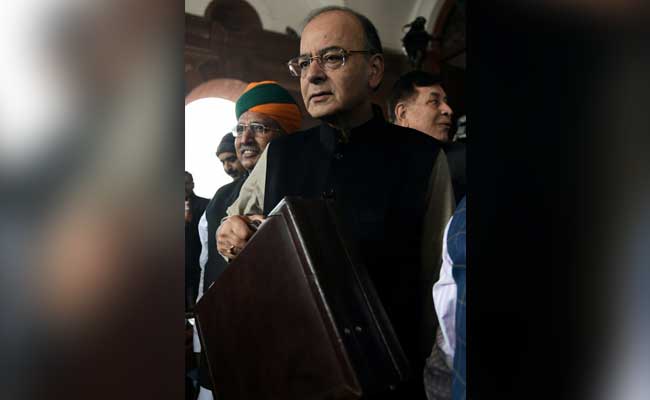Finance Minister Arun Jaitley in Budget 2017 cut the income tax rate on the lowest slab (Rs. 2.5 lakh to Rs. 5 lakh) to 5 per cent from 10 per cent. To offset the revenue loss, he imposed a surcharge of 10 per cent on those with taxable income between Rs. 50 lakh and Rs. 1 crore, thus bringing more taxpayers into the purview of surcharge. And the 15 per cent surcharge on income above Rs. 1 crore will continue as before. The total amount of tax foregone on account of these changes in tax rates is estimated at Rs. 15,500 crore. The new income tax rates will be applicable from April 1, 2017 or assessment year 2018-19 (AY2018-19).
What is Surcharge?
Surcharge is applicable on income tax if the income exceeds a specified limit. It is applicable on the basic tax (without inclusion of cess). Let us consider a person below 60 with taxable income of Rs. 75 lakh. What will he pay after the surcharge proposed in the Budget? His basic tax would come to Rs. 20.62 lakh. The 10 per cent surcharge comes to Rs. 2.06 lakh. Thus his total tax liability would be Rs. 22.68 lakh and after education cess it comes to about Rs. 23.37 lakh.
The concept of marginal relief is designed to provide some relief in levy of surcharge to a taxpayer where the total taxable income marginally exceeds Rs. 50 lakh or Rs. 1 crore.
How marginal relief helps lower tax burden?
Let us consider two scenarios:
1) where the surcharge is 10 per cent (income between Rs. 50 lakh and Rs. 1 crore) and 2) where surcharge is 15 per cent (income above Rs. 1 crore). According to tax rules, the surcharge of 10 per cent is not applicable where marginal relief comes into play even if taxable income is above Rs. 50 lakh. According to the concept of marginal relief, if the amount payable as surcharge exceeds the income above Rs. 50 lakh or Rs. 1 crore, the surcharge will be applicable at a marginal rate, which is 70 per cent of the incremental income above Rs. 50 lakh or Rs. 1 crore. (Incremental income above Rs. 50 lakh or Rs. 1 crore - 30 per cent of incremental income).
Scenario - 1 (where income exceeds Rs. 50 lakh marginally)
Suppose an individual's taxable income amounts to Rs. 51 lakh. Technically, the person has to pay a 10 per cent surcharge as income exceeds Rs. 50 lakh. But in this case, marginal relief comes into play and the surcharge he has to pay is not 10 per cent. How?
The person's income above Rs. 50 lakh is Rs. 1 lakh (Rs. 51 lakh - Rs. 50 lakh). On Rs. 51 lakh, the person is supposed to pay tax of Rs. 13.42 lakh and surcharge of (@10%) Rs. 1.34 lakh for (AY 2018-19). Since the surcharge (Rs. 1.34 lakh) is more than the income differential between (Rs. 51 lakh and Rs. 50 lakh), the surcharge of 10 per cent will not be applicable. Thus, the person with taxable income of Rs. 51 lakh will pay tax of Rs. 13.42 lakh and surcharge of Rs. 70,000 which comes to Rs. 14.12 lakh. Including cess (3%), it will come to Rs. 14.54 lakh. If the marginal relief had not been applicable, the total tax liability would have been Rs. 15.20 lakh.
Scenario - 2 (where income exceeds Rs. 1 crore marginally)
Suppose an individual's taxable income amounts to Rs. 1.02 crore. Technically, the person has to pay a 15 per cent surcharge as income exceeds Rs. 1 crore. But in this case, marginal relief comes into play and the surcharge of 15 per cent is not applicable. How?
The person's income above Rs. 1 crore is Rs. 2 lakh (Rs. 1.02 crore - Rs. 1 crore). On Rs. 1.02 crore, the person is supposed to pay tax of Rs. 28.72 lakh and surcharge of (@15%) of Rs. 4.31 lakh for (AY 2018-19). Since the surcharge (Rs. 4.31 lakh) is more than the incremental income of Rs. 2 lakh (Rs. 1.02 crore - Rs. 1 crore), then the 15 per cent surcharge will not be applicable. Instead, a lower surcharge of Rs. 1.4 lakh (70 per cent of incremental income of Rs. 2 lakh) will be applicable as marginal relief comes into play.
Thus the tax liability of the person with taxable income of Rs. 1.02 crore comes to Rs. 30.12 lakh (Rs. 28.72 lakh Rs. 1.4 lakh). Including cess, it would come to Rs. 31.02 lakh crore. Had marginal tax not come into play the total tax liability would have been Rs. 33.03 lakh and with cess Rs. 34.02 lakh.







